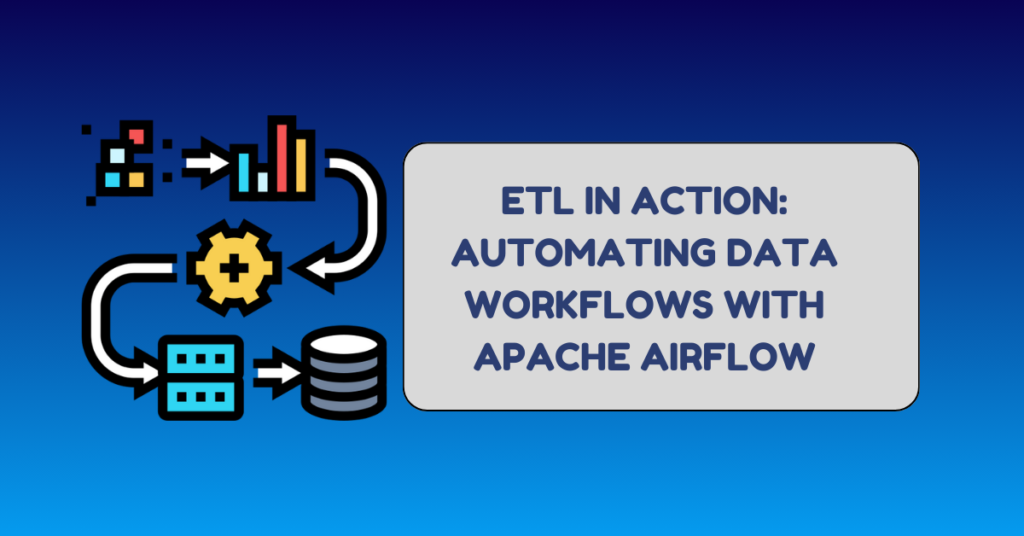Introduction: The Case for Automation
Imagine running a company where your data pipelines constantly break due to manual errors, delaying reports and insights. Sounds frustrating, right? That’s where ETL (Extract, Transform, Load) automation comes in. Businesses today rely on seamless data workflows to make real-time decisions, and Apache Airflow is a powerful tool that makes this automation possible.
In this article, we’ll explore why automating ETL is essential, how Apache Airflow works, and how it benefits Data Engineers, CEOs, and Recruiters alike.
Why Automate ETL? (Business & Technical Benefits)
Manual ETL processes come with challenges:
- Human errors cause data inconsistencies.
- Scalability issues arise as data volume grows.
- Time-consuming maintenance hinders agility.
By automating ETL with Airflow, companies achieve:
- Reliable data pipelines with automated monitoring.
- Cost and time savings with scheduled workflows.
- Faster decision-making through real-time data availability.
Apache Airflow: The Engine of ETL Automation
Apache Airflow is an open-source workflow orchestration tool that allows you to schedule, monitor, and manage ETL processes. It consists of:
- DAGs (Directed Acyclic Graphs) – Define workflow dependencies.
- Operators & Tasks – Execute ETL jobs.
- Schedulers & Executors – Run and manage workflows efficiently.
Example Airflow DAG
from airflow import DAG
from airflow.operators.python import PythonOperator
from datetime import datetime
def extract_data():
print("Extracting data from API...")
def transform_data():
print("Transforming data...")
def load_data():
print("Loading data into warehouse...")
dag = DAG(
'simple_etl_pipeline',
schedule_interval='@daily',
start_date=datetime(2024, 1, 1)
)
extract = PythonOperator(task_id='extract', python_callable=extract_data, dag=dag)
transform = PythonOperator(task_id='transform', python_callable=transform_data, dag=dag)
load = PythonOperator(task_id='load', python_callable=load_data, dag=dag)
extract >> transform >> load # Task dependencies
Practical Applications of Airflow
- Automating Data Pipelines – Pull data from APIs, clean it, and store it in Snowflake or BigQuery.
- Orchestrating Machine Learning Workflows – Schedule feature extraction, model training, and deployment.
- Managing Business Intelligence Dashboards – Aggregate sales data for real-time insights.
Implementing Airflow in Production: Best Practices
- Design efficient DAGs – Keep them modular and reusable.
- Monitor & log errors – Use built-in logging and alerting.
- Optimize execution – Use CeleryExecutor or KubernetesExecutor for scaling.
Why CEOs Should Care About ETL Automation
For CEOs, automated ETL means:
- Faster access to insights for data-driven decisions.
- Reduced operational costs by minimizing manual data handling.
- Enhanced compliance through reliable data governance.
Example: A retail company automated its sales reports with Airflow, reducing reporting time from 4 hours to 15 minutes, leading to faster business decisions.
The Talent Perspective: What Recruiters Should Look For
As data automation becomes critical, recruiters should seek Data Engineers proficient in Airflow. Key skills include:
- Python & SQL for data transformations.
- DAG creation & workflow monitoring.
- CI/CD & containerization (Docker, Kubernetes).
Sample interview question: “How would you handle failed tasks in an Airflow DAG?”
Conclusion & Next Steps
Automating ETL with Apache Airflow improves data efficiency, reliability, and business agility. To get started:
- Install Apache Airflow and create a simple DAG.
- Explore advanced features like XComs and Sensors.
- Join the community and learn from real-world use cases.
For further learning, check out Apache Airflow’s official documentation. Happy automating!
